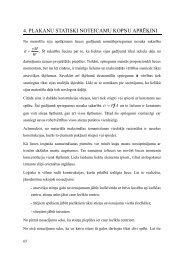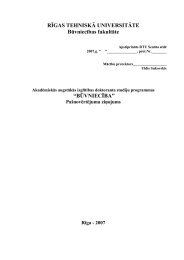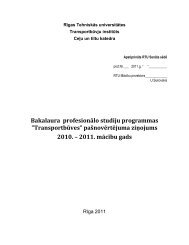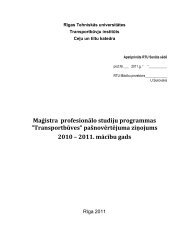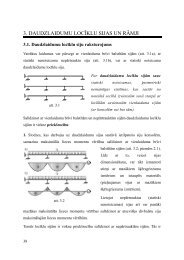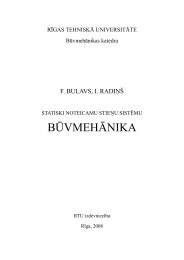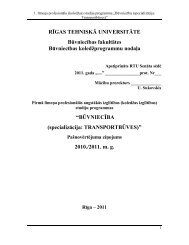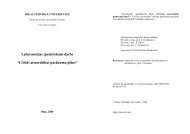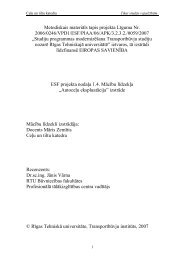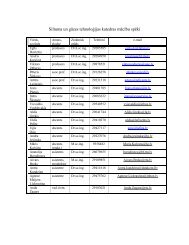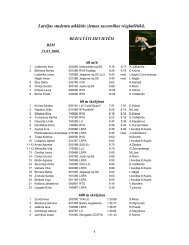You also want an ePaper? Increase the reach of your titles
YUMPU automatically turns print PDFs into web optimized ePapers that Google loves.
172 ALEKSANDR KORJAKIN ET AL.<br />
shells is discussed, for example, in References [2,3,8,15,22,23,33,35,43,44,48].<br />
Though the damping characteristics of laminated composite structures have been<br />
studied extensively, studies of sandwich composite structures are limited. The<br />
analysis of sandwich beams and constrained layer damping in beams has been performed<br />
in Reference [9]. A three-layered beam theory was employed where the<br />
continuity of the displacements and the transverse shear stresses is satisfied at the<br />
interfaces. The energy method is used to derive the governing equations of motion<br />
for transverse vibrations of curved sandwich beams [46]. Flexural vibrations of<br />
viscoelastic damped sandwich plates has been analyzed in Reference [17]. A finite<br />
element analysis associated with an asymptotic solution method for the harmonic<br />
flexural vibrations was proposed. The finite element method was employed for the<br />
analysis of the harmonic response of damped three-layer plates in Reference [20].<br />
General non-linear equations of motion of viscoelastic damped sandwich plates<br />
and cylindrical panels were derived with the help of the principle of virtual work in<br />
Reference [49]. A special finite element approach was developed in Reference<br />
[36] to study the vibration and damping characteristics of three-layered conical<br />
shells with a viscoelastic core. A finite element based on the discrete layer theory<br />
and taking into account the shear deformations was used for analysis of spherical<br />
shells with a viscoelastic core in Reference [15]. Damping properties of three-layered<br />
shallow spherical shells have been studied in Reference [33]. Expressing the<br />
in-plane displacements in terms of auxiliary functions, the general solution of the<br />
equations of motion for non-axisymmetric modes was given in terms of Bessel’s<br />
functions.<br />
Different shell and plate theories can be used to analyze the sandwich structures.<br />
Good results can be obtained employing the so called zig-zag theories. In<br />
Reference [10] a multilayered plate element is proposed which meets computational<br />
requirements and includes both the zig-zag distribution along the thickness<br />
coordinate of the in-plane displacements and the interlaminar continuity for the<br />
transverse shear stresses. A simple layerwise higher-order zig-zag model is proposed<br />
for the bending of laminated composite plates. The model accounts for cubic<br />
variation of the transverse shear stresses across the laminate with zero values at<br />
the free surface [27]. A beam finite element based on a discrete layer laminated<br />
beam theory with the sublaminate first-order zig-zag kinematic assumptions<br />
is presented and assessed for thick and thin laminated beams [50]. Authors<br />
have used a modified form of DiSciuva’s linear zig-zag laminate kinematics, in<br />
which continuity interfacial transverse shear stresses are satisfied identically. A<br />
computationally efficient finite-element formulation for linear and non-linear<br />
analysis of flat sandwich panels is presented in Reference [11]. Mechanical accuracy<br />
is acquired by allowing a zig-zag in-plane displacement field in the thickness<br />
direction and by fulfilling interlaminate equilibrium at the interface between the<br />
core and skins for the transverse shear stress components. A high accuracy for prediction<br />
of stresses can be obtained employing a higher-order zig-zag theory [6].



